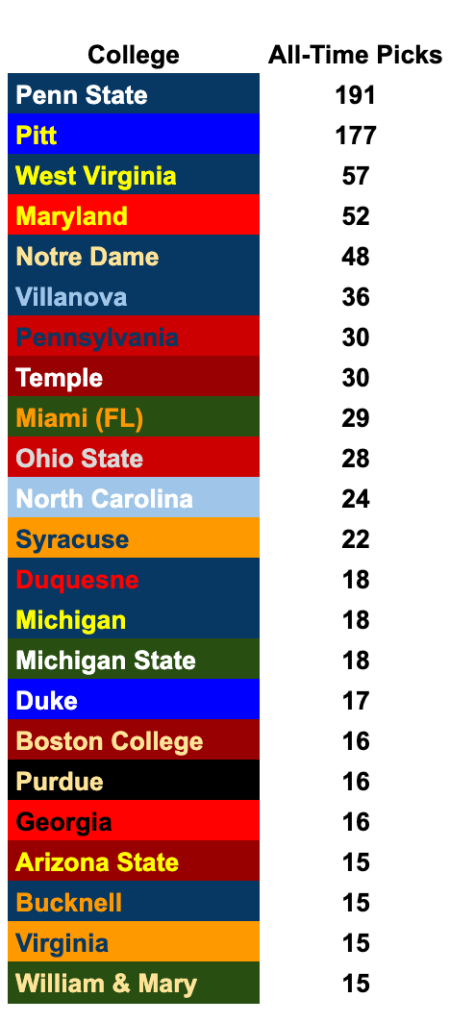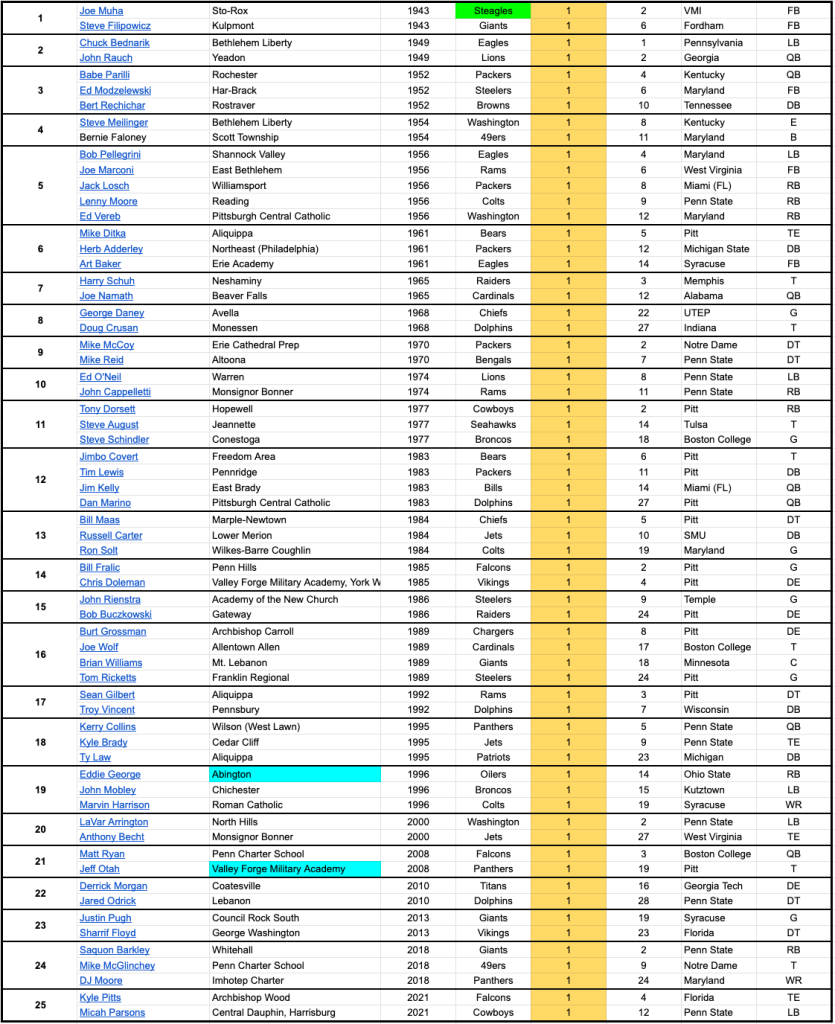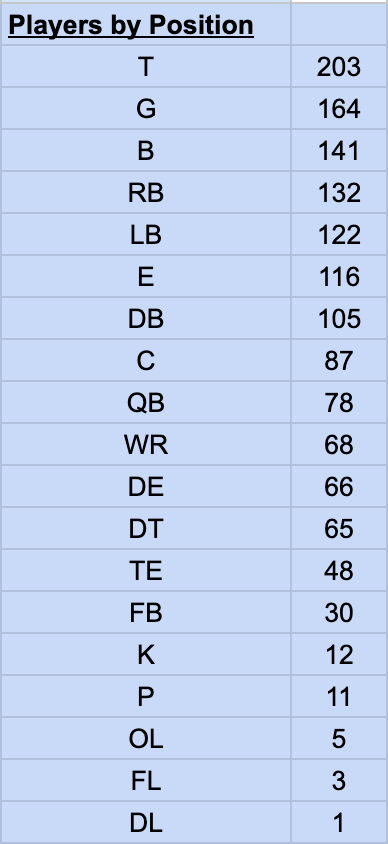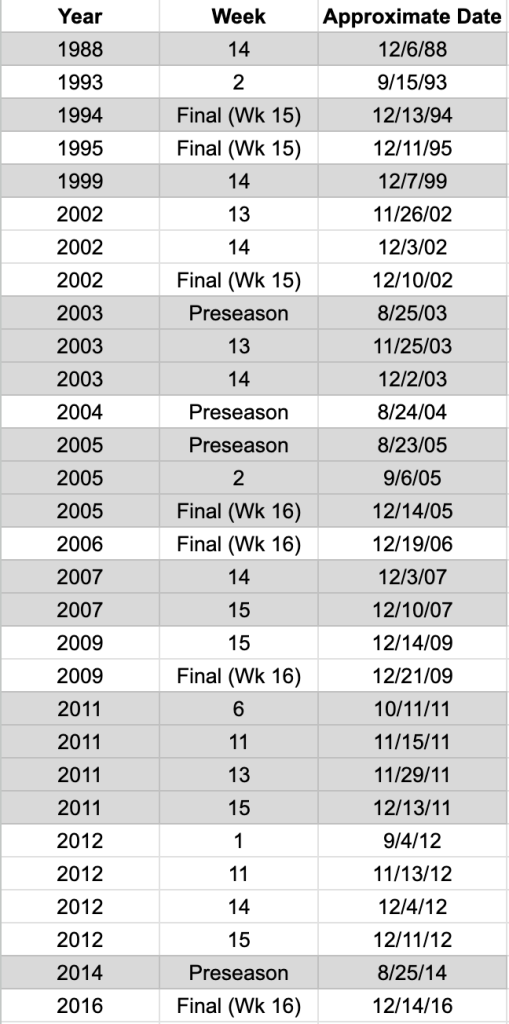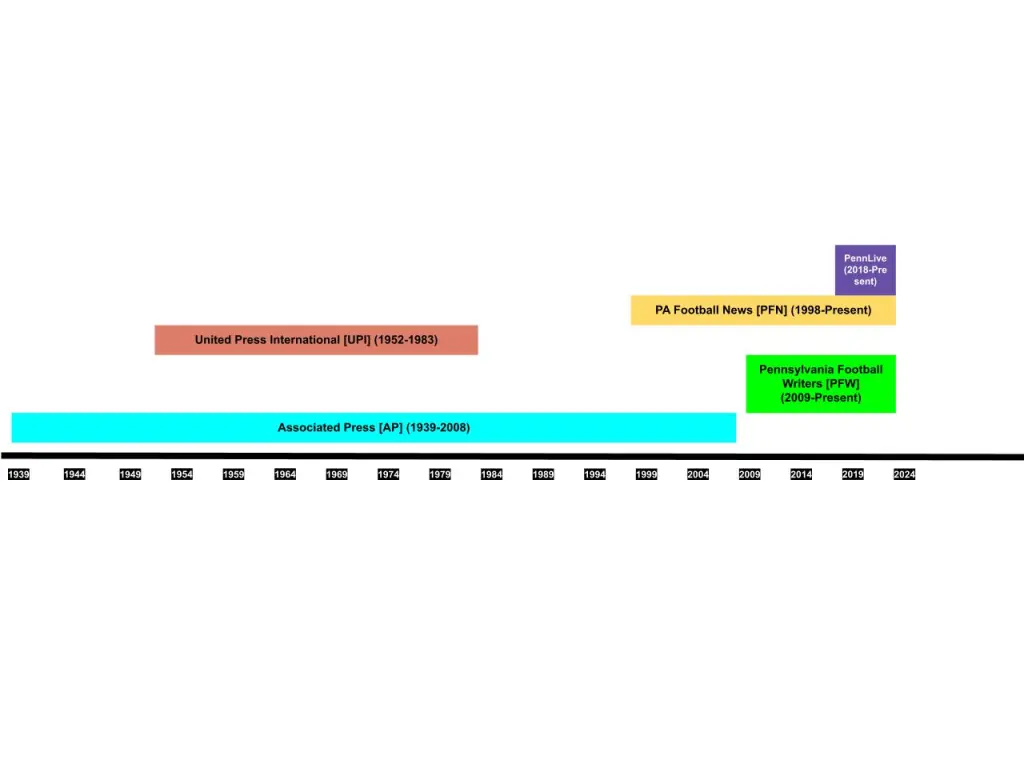The 89th NFL Draft was held over the weekend and, for the 89th time, Pennsylvania high school alums were selected. While the state can claim to have had players picked in every NFL Draft to this point, the historical trends have shifted considerably over time. I’ll include any trends or observations that I found interesting below, but let’s start with a recap of Pennsylvania’s six selections in 2024:
This Year’s Selections
Marvin Harrison, Jr. (Arizona Cardinals, 1st Round, 4th Overall)
- St. Joe’s Prep’s 11th NFL Draft pick and first since the trio of D’Andre Swift, John Reid and Jon Runyan in 2020. Harrison spent his freshman year at LaSalle; he is the first former LaSalle player to be selected since Jimmy Morrissey in 2021 and the 7th Explorer chosen all-time.
- Harrison was the highest pick from Pennsylvania since Archbishop Wood’s Kyle Pitts was taken 4th overall by the Falcons in 2021. Saquon Barkley of Whitehall went 2nd overall in 2018.
- Harrison is the 68th wide receiver from Pennsylvania to be chosen in the NFL Draft and the first to be selected in the first round since Nazareth’s Jahan Dotson two years ago. Harrison’s father Marvin Sr. (a Roman Catholic grad) was the 19th overall selection as a wide receiver in the 1996 Draft.
- At 4th overall, Harrison is tied for the highest selection ever by a Pennsylvania wide receiver. In 1962, Williamstown’s Gary Collins was also taken 4th overall by the Browns. In 1950, Turtle Creek’s Leon Hart went first overall as an end, but that position was much closer to today’s tight end than a wide receiver.
Jared Verse (Los Angeles Rams, 1st Round, 19th Overall)
- Not long after Harrison became the 95th first round pick in Pennsylvania history, Verse became the 96th.
- Verse is just the second player from Central Columbia to be chosen in the NFL Draft, joining Mike Morucci. Morucci was picked in the 7th round (177th overall) by the Saints in 1980 as a running back out of Bloomsburg University.
- The fifth player from Pennsylvania drafted out of Florida State, Verse is also the 77th player to be selected by the Rams.
- Verse is the highest-drafted Pennsylvanian defensive lineman since Penn Hills’ Aaron Donald was taken 13th overall in 2014.
Tykee Smith (Tampa Bay Buccaneers, 3rd Round, 89th Overall)
- The 4th NFL Draft pick from Imhotep Charter, joining David Williams and DJ Moore (both in 2018) and Shaka Toney (2021).
- Smith is the 16th Pennsylvania draft pick chosen from Georgia and the first since Mark Webb of Archbishop Wood in 2021.
Jeremiah Trotter, Jr. (Indianapolis Colts, 5th Round, 155th Overall)
- Trotter was the second St. Joe’s Prep grad to be chosen in 2024, giving the school two drafts with multiple players selected in the past five years.
- Trotter is the seventh Pennsylanian to be selected from Clemson, but the first since Valley Forge Military Academy’s Jim Bundren was chosen in 1998.
- He is the 122nd linebacker drafted from a Pennsylvania high school, which is the fifth most-drafted position from the state.
Daequan Hardy (Buffalo Bills, 6th Round, 219th Overall)
- Hardy is the 12th Penn Hills graduate to be selected in the NFL Draft, tying the school with Bethlehem Liberty, Beaver Falls and Mt. Lebanon for the ninth-most picks in state history.
- First Penn Hills player to be selected since Donald.
- Hardy is the 191st Pennsylvanian to be selected out of Penn State, the most of any university.
MJ Devonshire (Las Vegas Raiders, 7th Round, 229th Overall)
- Devonshire is the 15th draft pick from Aliquippa, the fifth-most of any high school in the state. He is the first Quip to be selected since Tommie Campbell was chosen in 2011.
- He is the 177th selection from Pennsylvania to play collegiately at Pitt, which is second only to Penn State.
- He is the 25th Pennsylvania player to be selected by the Raiders, but only the second (joining fellow Pitt alum Morrissey) to be chosen during the team’s time in Las Vegas.
Historical Trends
- Pennsylvania’s six total selections this year equaled last year’s total and held serve with the state’s typical output this century. Since 2000, an average of 7.36 Pennsylvania high school alums have been chosen each year. However, the state historically has produced many more draft picks on an annual basis, as can be seen in the chart below:
From 1938 through 1987, the number of Pennsylvanians picked each year never dipped below double-digits. In fact, twenty or more players were chosen in all but two drafts from 1942 through 1971. The high-water mark was 1953, when 37 players from PA were chosen.
- As one would predict, Penn State and Pitt hold a commanding lead over all other universities in producing draft picks with Pennsylvania natives. All colleges with at least 15 draft picks are shown below:
- Harrison and Verse gave Pennsylvania two first round picks for the 26th time. The other occurrences are shown below (click to enlarge):
- Finally, here are a few quick lists of the most popular characteristics of PA high school alums in the NFL Draft:
Positions Played by Drafted Players
Drafted Players by Team
Drafted Players by Round


